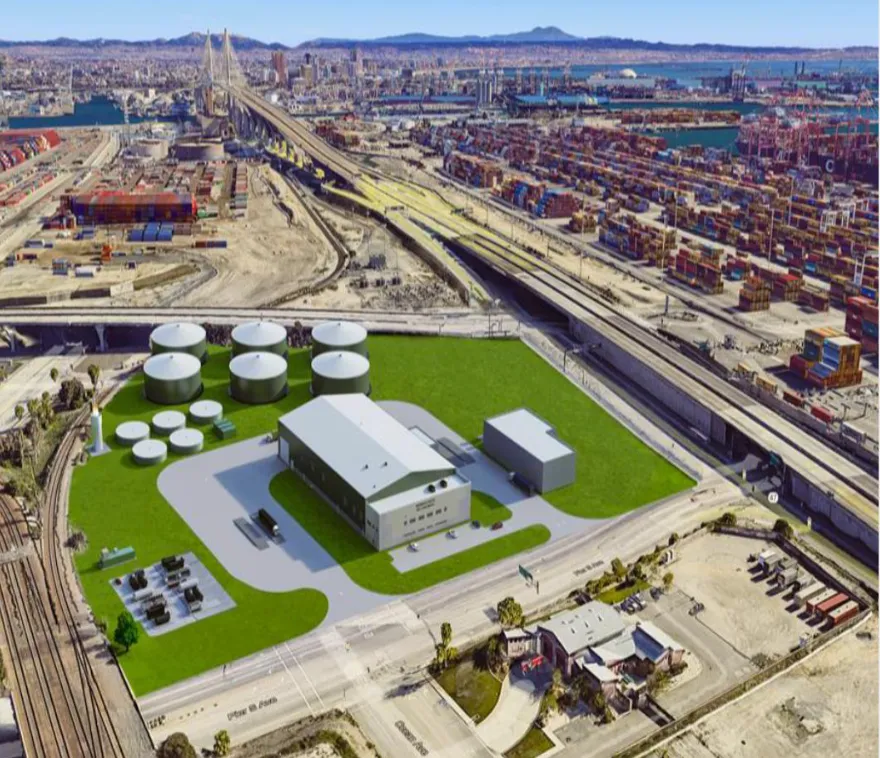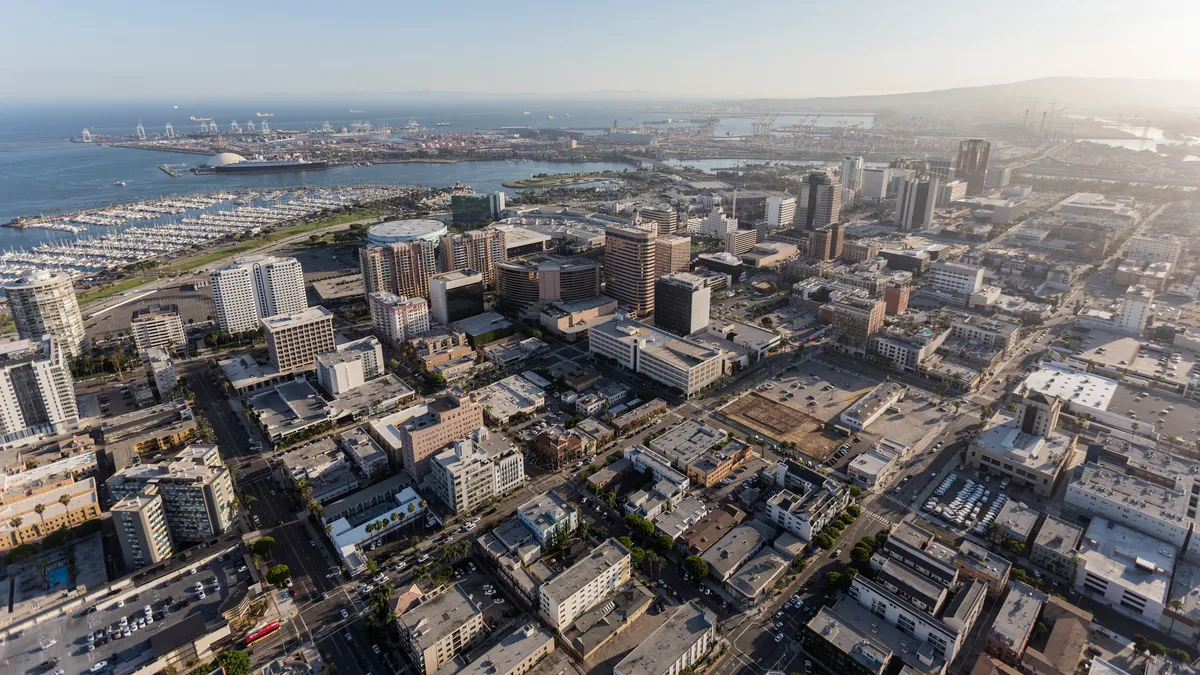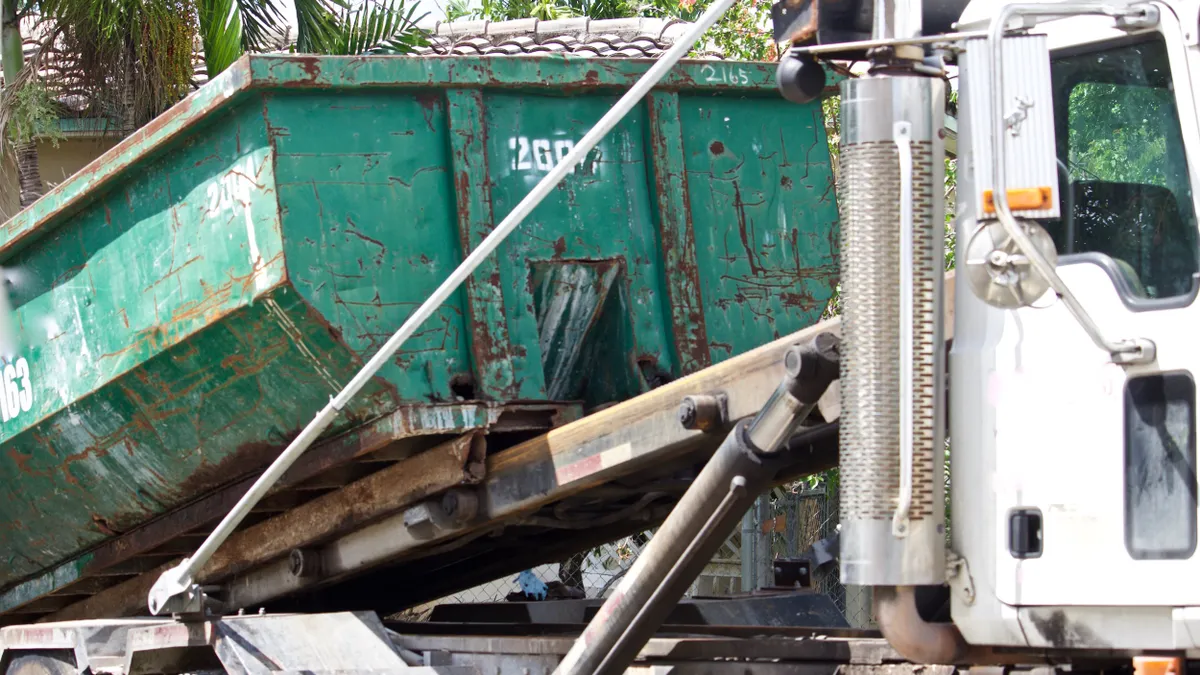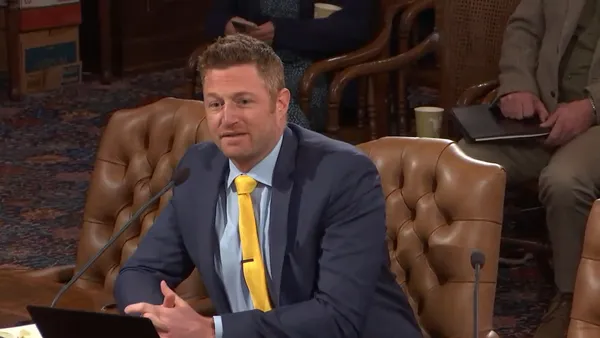Dive Brief:
- City Council members in Long Beach, California, granted city officials permission to begin exclusive contract negotiations with Bioenergy Devco on an anaerobic digestion facility in a vote Monday. The digester would take the place of the soon-to-be-demolished Southeast Resource Recovery Facility, a waste-to-energy plant operated by Covanta.
- The city expects it will take three to five years to bring the 314,000 tons-per-year digester online, according to public documents. The digester could halve the processing fee for Long Beach's municipal organics, as the city currently faces high regional tip fees.
- There is now one remaining WTE facility in California, which is also facing pressure to close. The state's regulatory environment has created a difficult environment for the facilities while requiring more jurisdictions to extract value from the organic waste stream.
Dive Insight:
Long Beach is taking steps to add needed organics processing capacity at a time when state-level policy is guiding jurisdictions to maximize the value from waste streams.
The facility proposed by Bioenergy Devco would produce an estimated 514,600 mmBtus of renewable natural gas annually in addition to adding organics processing capacity and “green” jobs, according to city documents. The digestate would be used as soil amendment, according to a release from BDC.
“We're proud to partner with the City of Long Beach on this advanced organic processing facility,” said BDC CEO Shawn Kreloff in a statement. “Our proven anaerobic digestion technology can help communities like Long Beach achieve their sustainability goals and reduce greenhouse gasses generated by food waste.”
City officials selected BDC after an RFP process in which they received three applicants. Officials also toured BDC's Jessup, Maryland, facility, where the anaerobic digester processes 100,000 tons of organics per year.

Officials can now begin negotiating an organic waste flow agreement, ground lease and other necessary contracts with BDC. The RFP left open the possibility that Long Beach could gain control of the facility at the end of BDC’s ground lease, estimated to have a 10 to 20 year term, at no cost to the city.
Long Beach expects the facility will provide organics capacity for broader Los Angeles County. The digester will help the area comply with several California laws, including SB 1383, which aims to reduce organic waste disposal statewide by 75% by 2025. Its location on the 12-acre site of a former WTE plant is also the result of policy decisions that have created a difficult operating environment for waste-to-energy facilities.
Long Beach cited California AB 1857 as a significant factor behind the closure of its Southeast Resource Recovery Facility. The law, passed in 2022, amended the California Integrated Waste Management Act by ending the practice of counting incineration as landfill diversion. The law and the age of the SERRF were key factors prompting the facility's closure.
Nick Lapis, director of advocacy for Californians Against Waste, said AB 1857 was “the straw that broke the incinerator’s back” for both the SERRF and Covanta Stanislaus, the last remaining mass burn combustion facility in the state.
In a letter to Stanislaus County and Modesto city officials in December, Covanta cited additional regulatory changes in California that have made continued operation of WTE in the state difficult. That includes a decision by the California Air Resources Board to end its practice of exempting WTE facilities from its cap-and-trade program in 2017. The San Joaquin Valley Air Pollution Control District also tightened nitrous oxide emissions limits for WTE, prompting Covanta to spend $7 million on upgrades in 2023.
As a result of those changes, Covanta expects costs to exceed $23 million through the remainder of its operating contract, which expires in 2027. The company is now asking Stanislaus County and the city of Modesto to consider “significantly” increasing the tipping fee, allowing Covanta to process more special waste at the site or begin shutting down the facility by June 30.
“In my mind, I think that really highlights the fact that these facilities are not at all economical when they have to compete with other forms of disposal,” Lapis said in emailed comments.
The facilities also remain a target of environmental justice groups who have campaigned against WTE facilities in California communities. Bianca Lopez, co-founder of Valley Improvement Projects, said that the rising number of facilities targeting organic waste will address the greenhouse gas emissions savings that WTE advocates argue incineration provides over landfilling.
What's more, Lopez said that shuttering WTE plants removes sources of dioxin, lead and nitrogen oxides that have existed for decades. She’s urging Stanislaus County to follow the lead of Long Beach and implement alternative solutions to waste, including an updated zero waste plan.
“We are excited about the idea that Covanta will no longer be in our backyard, nor in any backyard in California,” Lopez said in an email. “While Covanta prides itself as a polluter who doesn't pollute as much as allowed, they still pollute.”
Covanta publishes certain emissions from the Stanislaus facility online, and the company maintains it stays within regulatory limits. A spokesperson said Covanta remains in negotiations with Stanislaus County. Meanwhile, the company is scheduled to begin a year-long process to decommission the Long Beach site this month. After that, the property will be handed back over to the facility for demolition.















